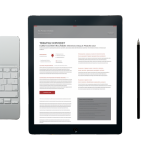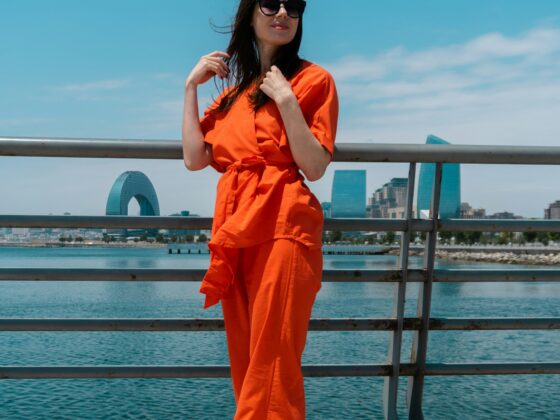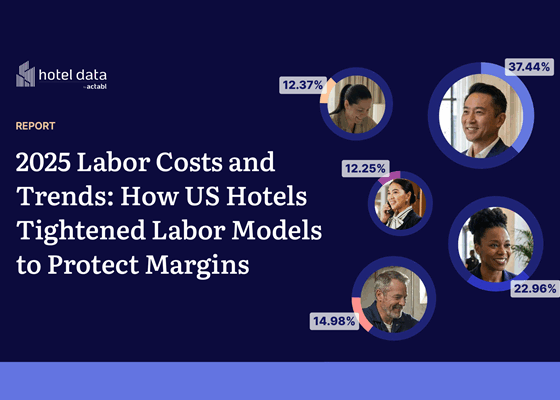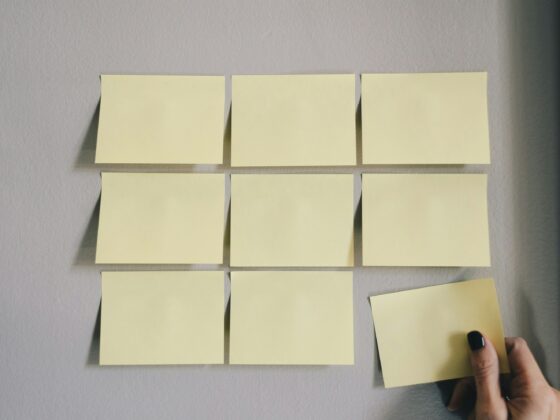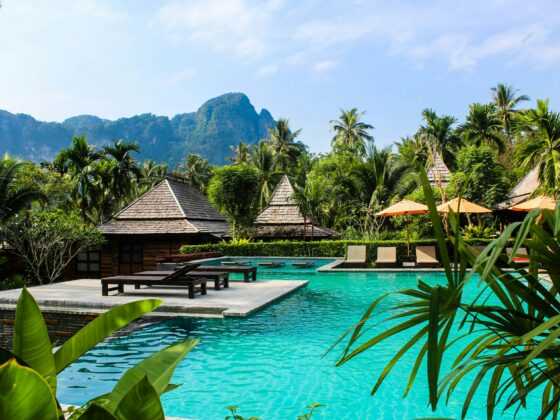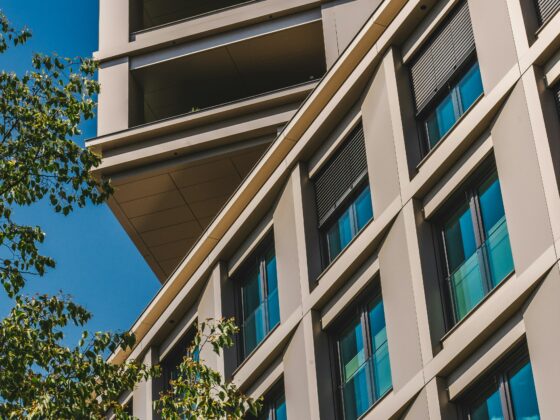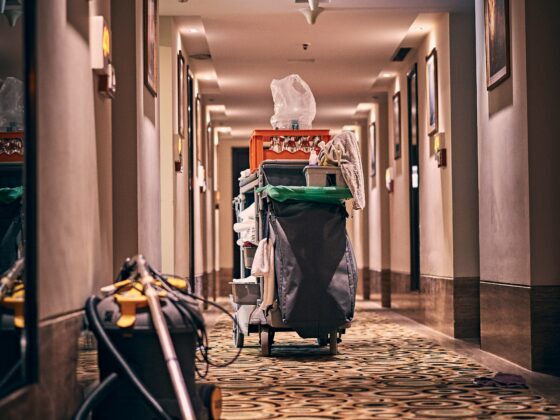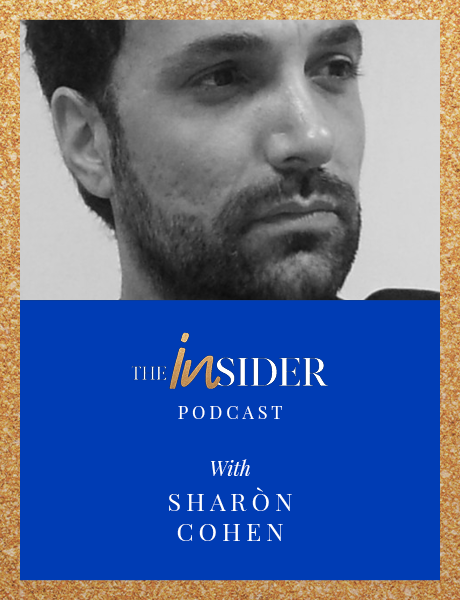
How much of a change have you witnessed in the way luxury brands have approached the design, build and operation of their stores throughout this past decade or so?
Fundamental. It changed completely. Ten years ago, eleven years ago when I joined the world of retail it was already ongoing; but it’s still completely different to where we’re standing today. Consider basically ten, eleven years ago, you know, and obviously before that, stores were an impressive container of the product. It is a cathedral of luxury. It used to be a cathedral of luxury. Almost intimidating. The idea that the store itself almost creates a filter between the clients that can afford and the clients that can’t afford.
Stores used to have closed windows. They used to have much more of a barrier between the inside and the outside. And all that changed. It changed for several reasons. Because luxury has passed a process of democratization of the market, creating also much more affordable products for wider customers. It’s not only good, there are good and bad elements in it; but the fact is that this happened in stores that became from containers to experiential.
Today, with luxury, it’s all about experience. Now consider this. Today, basically, the idea is that the stores need to be destinations, and especially when we talk about certain flagship stores in which they’re much more open from the outside. Most of the windows are today see through and not closed windows anymore. And basically the idea is to attract the clients and even roaming clients, something that usually before was the exact opposite. But even a client that can’t afford luxury retail, who enters into a luxury store and takes a photo and posts it on Instagram and sells it as the dream. Imagine the marketing strength behind the person who says, wow, I visit in this store. I wish I could afford that. I can’t imagine any better marketing or advertisement for a brand to be a dream, something you couldn’t afford. Just as strong as the client is at today. I just bought myself a Prada bag; a Gucci bag, that doesn’t matter, and publish it as an achievement. So therefore, even the client that is not a client is still today a service for the brand.
And then there is another thing. The idea today is that we need to keep the client as much as we can inside the stores. So for example, creating an infinity of sitting places that are very comfortable, one different from the others; creating stores that are very interesting to see. So the entertainment is in the service itself. Making sure that the client will have the coffee, the Champagne, whatever it is that he or she is going to have.
Something else that happened in this store. So many flagship stores today have, for example, a coffee place or an exhibition that can be an exhibition about the heritage of the brand. They can have just an area of activation. So, for example, a launch of a new product that has an entire scenography behind it, basically, that creates some kind of a moment that is interesting to see. So basically the idea is that experience today is the most fundamental thing for the store. When you buy a product today from luxury, it’s not just a product, it’s an entire world that is circulating around the client.
And I guess that’s also part of why we see some brands turning some of their boutiques into sort of membership clubs and, as you say, with cocktail bars and meeting places and they become places where the clientele can come and just meet up and they don’t even need to be browsing watches or jewelry or whatever. I mean, is that all part of that same experiential desire to draw people in?
Absolutely. Think, for example, of the stores of Dior in the last four to five years, that have become almost small department stores. You have everything inside of it. You have a cafe, you have sometimes in restaurant, like in the Avenue Montaine, and you have the experience that goes from taste to visual to obviously the product itself. And the idea is that, again, is a destination without necessarily needing to be for a client of Dior. But every single person who enters there and take a selfie and posts it and talks about it, is publicity. And that is exactly what is happening. Exactly what you mentioned.
And I mean, I’m not core clientele for luxury brands. But I must say that one of the things that myself and my wife do every Christmas is we make sure we go at nighttime into Old Bond Street in London just to look at the storefronts of the luxury brands. Of the Diors and the Chanels and all manner of different houses up there, because they are so spectacular. And I suppose that comes back to what you were saying about that ‘Instagrammable’ experience. I mean, there are crowds of people out there. There were just hundreds of people taking photographs. So I guess their job is done in that situation!
And that is exactly the point. The truth is that there are still many people who are kind of scared to enter into luxury stores, but they still take the picture in Old Bond Street and it’s like, look at the dream, look how amazing. And the power, the strength of these luxury brands. Basically, no one in the private market, except high tech companies, can afford what these brands can afford. And therefore the creativity today, and this has pretty much been the locomotive of creativity today… is pretty much inside the luxury brands. They are the ones who are actually setting the pace of creativity, of the next experience.
Sharon’s arrival into the luxury world was with Prada, which he joined in 2014. He’d previously been working as a senior architect for the Rome-based practice Studio Fuksas, and so I asked him how this switch to luxury came about.
It was kind of random. And as always, networking is probably one of the most important things in the career of a person. I met the person who back then used to be the store planning director of Prada, and we started a conversation. I told him about the project in Rome for Benetton, and he just asked, why wouldn’t you come to Prada? And I said, but with pleasure! Two years had passed since that conversation, in which we were in contact on and off, and in the end, I made this decision and I went to Prada. I’m kind of an ambitious person, so always also definitely wanted to start from the best. And I had the luck to do that. And Prada is I would say is one of the most difficult ‘gyms’ you can work in, but so stimulating. I have learned so much in this experience of working with a brand like Prada.
And how long were you with Prada?
For eight years.
And that was presumably during quite a period of expansion for them in terms of their retail estate?
Absolutely. Prada in that period… so basically I became the director of the North of Europe. So in this period we refurbished the entire region, which is the region that is the United Kingdom, Ireland, Scandinavian countries and the Netherlands. We refurbished with a completely new concept the entire area. Prada means the entire group, which means the Prada, Miu Miu, Church’s. And obviously, as I mentioned before, I had the luck to open the first Marchesi cafe outside of Milano. So yes, I basically was a testimony of a complete change inside the branding, the design, the brand, the approach of the brand during those years in which I worked with Prada.
Bringing us back to the present day, I wanted to discover more from Sharón about the various elements that turn an empty space into an alluring luxury store interior; and how, as an architect, he looks to harness these elements to maximize business performance.
First of all, one of the things that we try to bring today to the stores is flexibility. Try to have the store that can change in aspect, sometimes even during a night. That means that, for example, a store needs to be able to be completely empty in case you want to do an event. Which events is, for example. When you open a store, right, or when you renovate the store, there is an immediate 10%-15% increase in the sales, but it lasts very little, because this is the novelty and obviously today everybody loves novelty. But at the same time, just as all of us today when we buy a mobile, in the first second when we open the boxes it looks so nice, new and shiny. After five minutes it looks like we had it for our entire life. And it’s the same thing. So you need to maintain this interest in the store. So for example, by allowing flexibility in the store, this is how you maintain it.
So the possibility sometimes to change the background of the walls or to have the possibility to have an events space that is something that you use all the time with the marketing team in order to make a new launch, to invite a VIP, to always keep the interest in the store. The windows are very important to show, to have novelty, not only in terms of to show there is a new product, it’s also about to show new design from the outside; that something interesting is happening inside. This is why you change windows four to five times a year, which is a huge investment for these companies.
So that is one thing to think, how do we create a space that can be flexible enough to use it in different ways with time? The other thing that is very important is what we said before, what kind of spaces we need to create experiences that make people stay? And that has also changed completely. So all the seating areas, I consider that a lot of the stores we almost have today more an approach of hospitality than actually commercial retail. And that is something that is changing constantly. So going back to the question you asked me before, how do I think that store changes? Today the approach is more hospitality than simply a retail space. So that is another thing. So all these things you have to think every single day how you make it become part of your store design. How can you still be a commercial space? Because at the end, this is what it’s about, to create revenue, but create all these experiences without sacrificing what should be the main goal of every store: to sell.
Yes, it is interesting to see that from the design side, because I’ve been on a number of panels over the years with people like François-Henry Bennahmias, who was then CEO of Audemars Piguet who, said straight out that for my store staff, I recruit baristas, I recruit bartenders, I recruit people from hospitality because they have the personality and those kind of human skills, to give that kind of exceptional customer experience. But you’re thinking from the design side to meet those two things in the middle. So you’ve got, very much hospitality influenced spaces, but with hospitality skilled staff to work in them, so the customer sees that as a seamless approach. So, it’s interesting you’ve seen that from the design side as well.
Absolutely. Let me give you an example. We’re talking about experience and hospitality and so on. We started the conversation when we talked about the democratization of the luxury retail. What happened, though, is that you need to always think of your top clients, right? So basically what happened is that, at the moment that everyone can approach that level of service, that level of experience. So what do you reserve to your client that is the top client? And consider that today you have more billionaires than you ever had in history. So therefore today you have clients that can afford what was never able to be afforded before. And by the way, today’s luxury retail clients, they don’t have a face anymore. They don’t have a way of dressing. They can come to you with flip flops from Adidas that cost them 20 pounds and they still can be people who can buy 200,000 pound products.
So people don’t have any more a particular aura when they consume luxury retail. So for example one of the things that have changed is the service for the VIP. So until now, until not long ago, VIP was simply a part inside of the store that would have an area that could be closed behind two doors and become a VIP space. Sometimes it would be part of the stores when it had been used for VIP, and sometimes you just would close it when you have a VIP person inside the store. But that is not enough anymore, because people who can be considered to be this kind of VIP, you have more and more of them. So what do you do with this top 1% that are actually consuming from a brand more than 50, 60, 70,000 pound or euros a year? And today, for example, brands like Prada, like LV, like Chanel, have a new way to do VIP, which is the apartment, the flat, the residential. So they have, for example, and it can be either above the same flagship store or next to it, to have an entire flat that is for the use of the client. So this is where they meet the client. Ultra luxury flat in the center of Paris, of Milano, of New York. And then it’s basically something they can even stay there, something they can even rent it for a while with prices that we’re not going to mention here. And that is the next step. So basically, literally bringing hospitality, it is almost like you bring the retail to hospitality than the opposite. And that is, for example, now the next step of experience for the top 1% client.
And that’s really interesting. One of the things that’s really caught my eye in recent times of following the luxury and hospitality industry, is what Chopard did in Paris with the One Place Vendome, where they have literally built a hotel above their boutique in Place Vendome, which is essentially exclusively for client use. You have to be in the Chopard family of clients to actually stay there, pretty much. And I guess that’s another example, a physical example, of how this is working?
100%. Think of La Samaritan in Paris. So basically La Samaritan in Paris, LVMH did something extraordinary, extraordinary. And I have to say, only such a strong group could have done what they did to La Samaritan, the renovation, the details, going back to understand exactly how this building was done in this amazing Art Nouveau style. Exceptional. Now that is one thing, but basically what they created is a 360 degrees luxury experience, from retail to restaurants, Michelin restaurants and so on, and the hotel. And so you have the opportunity to have a 360 degrees top luxury experience. That is, I would say, is the most perfect example of what experiential luxury retail would mean.
Completely seamless as well. The brand is represented all the way through. And I guess one of the things about that is that the search for space must be becoming ever more intense, because I’m guessing the sort of elements we’re talking about take space. Does that mean that the brands are looking for ever more interesting, but also ever larger, spaces to actually execute these projects?
Space is basically, I would say, one of the fundamental strategies of the brand. I can tell you that way before we’re talking about design and so on, where you are located is the most important thing, either if it’s on the street or if it is in the department store. You will find that most streets of luxury retail would have almost the same order of the stores, starting with LV and Chanel and Hermès. And from there you will see that it goes from that point, from that focus, you’re going to see the closest brands into the strongest one, and then towards the, let’s say, smaller one or less famous, less strong.
Basically, the first thing that brands do when they choose a location was the competitor. If LV, for example, is already there, that’s already a point of view that creates interest. But the same thing goes inside a department store. You want to be next to the center. They all want to be together because it has to be a hub of luxury. Even when new markets are being chosen because, for example, you have some kind of emerging market, let’s say now Riyadh is going to be the next one, or maybe Mexico City. Brands are not going to open unless the environment is the correct one.
So it’s not only because right now you have a bigger and bigger class of rich people is not enough for a brand to enter. First of all, there has to be economic and political stability. The area which is going to be the destination of a brand has to be safe from crime, from war, from whatever it is. So basically, the countries themselves, or the city itself, will have to guarantee the safety of this place. And then the architectonical values need to be at the level. So if it is the street usually it’s going to be a heritage area. Usually it’s going to be a historical area in places in which this is possible; or it is going to be inside of a department store to host these brands. So that is where it starts. So where are you are. Because if a brand is going to open – I’ll give you an example even here from London – if instead of being on Old Bond Street or New Bond Street that now is becoming more and more important, you’re going to open in Oxford Street, you’re dead. It’s not going to succeed.
Yeah. That street just doesn’t have that cachet. So I mean, in that process we’re talking – and presumably these luxury brands have teams of people out there looking for locations – we are talking like a process of years to find and deliver these locations?
Absolutely. The real estate department is an extremely important department inside every brand. Which from one side is maintaining the contracts, on the other side is scouting new spaces and basically negotiating with the strongest landlords you can imagine worldwide, because we are talking always on properties that are the most expensive properties of every single city. Negotiations are usually quite hard because of course there is, again, we’ve talked about the most expensive… some brands when it comes to the most important location, if it is London, if it is New York or if it is Tokyo, will try to buy the property. As in itself it’s a huge investment because obviously also real estate is an important investment for brands. Therefore they will try to buy also this location. But yes, it is absolutely scouting of new locations and scouting of new destinations is very important.
By the way, sometimes a destination can be right now it’s still not happening, but maybe tomorrow Shoreditch is going to become a new destination area that will make brands to make it worthwhile, for example. And then something can happen, like what happened in SoHo in New York, where you have the Epicenter, which is one of the most creative stores that were ever created in the world of luxury, which is the Prada store in SoHo. And then it becomes a hub of concept stores; maybe something like that will happen tomorrow to Shoreditch? And brands are constantly opening the eye to where is the next location, what is the next trend? Where should we go? Or is it worthwhile to be the pioneering of making that location become the next place?
And I guess to do the latter, that’s only really the preserve of those brands which are so strong and have such an amazing story that they can actually stick their neck out and do it. I suppose there’s probably only a limited number of brands which have got the power to actually be the pioneers?
Absolutely. I can tell you a secret of the business: we all look towards what Louis Vuitton is doing next. They are the pioneer brand. They are the ones that have the strongest economic strength to explore new locations. In Helsinki, the first brand that ever happened, that opened over there, was Louis Vuitton. In Panama City, the first brand that opened was Louis Vuitton. They have the strength, then the experience to say, let’s see this location. Maybe it will successful, maybe not. And then once Louis Vuitton is well established, everybody’s looking at what works and then you start to see one after the other come afterwards. It’s definitely the light tower of the pioneering of new locations.
Excellent. So let’s assume that the brand has discovered and secured its space. And so now it has this blank sheet of paper. Now we all know, any of us that have had any involvement in luxury, will know that luxury is all about storytelling. Probably more so than ever these days. So without giving too many of your trade secrets away, as the architect, as the designer, how do you go about ensuring that the space as it’s developed doesn’t just work as a retail space, doesn’t just work operationally and experientially, but also underscores, amplifies, emphasizes that brand’s story? How do you bring that storytelling element into your designs?
The secret is semiotic. Every single thing you do inside of a store, when it comes to store design, and that is what I find so fascinating about store design. And that is what I find so fascinating about working with brands, is that there is no small project. Everything is a brand identity. You need to consider that stores are one of the three points of contact between brands and clients. One of them is the product, obviously. Second is marketing, which means advertisement or social media and so on. And then the store. So the entire strategy and identity of the store needs to be… and the identity of the brand needs to be in the store. And there is where semiotic starts. Semiotic is simply the idea that every sign needs to mean something. So, when you use craftmanship in a store and you can see pieces of furniture that are obviously handmade from a massive wood in high quality, it’s already a sign that you chose… it means that the brands care about quality, craftsmanship, therefore also the product is craftsmanship. And also, for example, by using natural materials you already say that this brand is about sustainability, is healthy, it’s not synthetic, so all of this is already part of semiotics.
Then you have the semiotic of the brand. So, for example, one of it can be that Prada is being identified by two fundamental elements: the color of the of the walls and the material, which is a canvas and green, usually canvas, not necessarily, but it’s always going to be the Prada green, and the floors, for example. And that means that when you see a Prada store, you don’t need to see even the logo. You don’t need to see that, you know already where you are even without the product. And that is one of the things that the strongest brand is doing, that they never lose their identity. It is a fundamental thing.
So by knowing exactly the brand, the heritage of the brand, and that is something that, by the way, is more and more important today. While brands passed a certain democratization during 2013-14. Some of them even lost identity. For example, you will find that during 2014 so many brands had the logo in the same font. Hugo Boss, Balenciaga, Saint Laurent, Céline, Burberry, and several others change all of the fonts. All of the brands are the same font. Why is that? Because it took away basically from the original logo that they had, which was usually in classical letters, and saying that we are no longer that brand in which we are aristocracy, or that we are for the aristocracy and so on. We are democratic, and therefore now we are open for everyone.
But look what happens now? Now we have back again a return to the heritage; and part of the storytelling and experiential retail we were talking about before, is about telling the client that goes inside the store: this is our heritage. And that is our strongest selling point, that we are here for 150 years, 100 years, 90 years, doing the best possible craftmanship that we can. And all of this you need to bring into the store. You bring to the store through the design of the store, therefore, the materials that you use, the elements that the way that you design the materials, sometimes art, sometimes a certain table, certain seating and so on. And through, let’s say, even elements like display that we talked before, that can be some kind of exhibition or something like that. So that is how you bring basically what you’re trying to create inside the store to bring the storytelling to the client, bring the heritage of the brand and tell it to client: we’re doing it best.
But also the fact of using, for example, natural material today and so on bring us to the sustainability part; to say we are aligned with the times in which we are. I can tell you one thing very important that changed completely in retail – going back to the question you asked me at the beginning – since ten years ago. Ten years ago, luxury retail in some cases was still identified with luxury skins, for example. Today it doesn’t exist anymore. We don’t do anymore seating made from ostrich (leather). We don’t do anymore Galusha, which is basically the skin of a manta ray, inside of the stores. Even the product itself, most companies took away the furs. Most companies took away precious skins or reduced to very few of them. And that is because it’s anachronistic to be identified by consuming resources of the planet just for status.
And does that sustainability element, which is an interesting point indeed… and I’ve seen a lot of brands like Kering and others, as you say, going fur free. Do you have to incorporate that that sustainability thinking now into the store design in terms of the way the store, you know, some of materials and things. I mean does that now have to be factored into the thinking when designing a store?
100%. I was lucky to work with Prada, which was the first brand who decided to be certified, with LEED, all the stores. By the way, I also was lucky to do the first stores that were certified with LEED, for example, the Copenhagen store and the building office in old Bond Street. LEED is basically certification that control the building, any building, any architecture, from the moment you resource the material. So where are the resources from? Is it certified? You can’t use wood that comes from a rainforest in the Congo, which is the last tree and which the gorilla lives on. You need to use certified material. It can be as luxury as you want, but it has to be certified. The marble. How has it been mined in the mountains? What impact? And so on. So all of that is fundamental for LEED. So where did you source it? Then the material that you are using. Is it recyclable or not recyclable? Is it healthy? So you’re not going to use any more stones that might have radon gas or something like that. So it has to be also healthy spaces.
The construction itself has to be sustainable in its process. And then once it’s open, how the store has been maintained, the consumption, the installation and so on. It means that also the store design had to change completely in the last ten years to satisfy the needs of sustainability, because you just can’t be anachronistic. The last thing that you want today is – and we talked about social media – is that on social media it comes out that this brand doesn’t care about sustainability, that this brand doesn’t have an ethic towards animals and resources of nature. So everything you do today, it is in one second that it will be out there, and you become the brand of yesterday.
Now, we’ve talked about this experiential side of the store. We’ve talked about the sustainability side of the store. But obviously one really important part of a store is selling products. And it’s not as I say the entire reason now, because I know that there is also the kind of, you know, the presentation of the brand and other elements. But ultimately the purpose of retail is to sell. Do you find in the luxury space, with all these other considerations around experiential and everything else, do you ever find a tension between those other elements and the pure business of selling product when you’re designing a store?
So after romanticizing all the world of luxury retail, revenue per square meter is the most important strategy – behind every strategy, everything that we’re doing. That is the truth. Also, because if that is not successful, all the beautiful parts we talked about until now wouldn’t happen. So basically the revenue per square meters, how do you guarantee it? Obviously the first step is the proportions between the front of house, the commercial area and the back of house, the storage and everything that has to come behind it, no? So basically find the right proportion, making sure that you can basically dedicate as much space for the front of house, for the commercial area, in order to have all the settings, but still have behind it a machine, an infrastructure that can serve all this, that happen in the commercial area. So basically where is the storage going to be? How far? Which storage is going to have it next to it. So the storage in which you’re going to have the shoes is going to be the closest possible to the shoes area, because you don’t want the client to wait for too long. Yes, we said that we want the clients to stay in the store as much as possible, but not because the service is bad, because they want to. So you need to make sure that this is happening. So that is the fundamental part.
But then also how do you display? So you need to have a perfect balance between display capacity, so it’s not going to be too packed. Maintain luxury for the luxury side but then also display the product. So usually there are going to be strategies like ‘one pair’ which means it is one element for each display product. Like in the high streets in which you have all the sizes for the same product. No, it’s going to be the storage is going to serve it. This is why, by the way, luxury spaces have much bigger storage than the high street, because basically you work a lot with the storage. ‘This is the one that I want to see’. Perfect. Let me escort you. Sit down here and I will bring you the pieces that you want to see. Because you need to maintain the product needs to be absolutely readable.
Also, when you think, yes, stores need to be beautiful, we talked about craftsmanship and so on, but the product needs to be seen. And therefore what color are you going to have behind it? On what are you going to display the product? It’s fundamental. And the other element that is one of the key elements of every store, that we never stop the research on it, is lighting. What kind of lighting? How do you light the product? How much light do you want to have in the store that is not on the product? Do you want to have the store that is very bright? Do you want to have a store that almost theatrically shows the product mainly? On other focus points? So it is another fundamental point. So all of these things in between the display capacity, the visual merchandizing, the relationship between… another fundamental thing when it comes to generating revenue, is the customer ceremony. So for example, when you have the wall of accessories, the leather goods, right? In front of it, you’re going to have usually a counter, the counter is going to have product that is having the dialog with what you have in the wall for the accessories, the bags let’s say. And in front of it you’re going to have the matching wallet or the matching key holder. Right? And so you have two things: from one side, you have an extension of the display in front of you on the counter that is standing in front of the wall. But on the other hand it’s a service point for the client itself. So usually you’re going to have seating next to the counter, so the client will be very comfortable while they’re looking, while the salesperson, the sales assistant, has the time to take that bag and match it with the other key holder or with the wallet and so on. The kids are going to be able to sit in the sofa behind them so they can relax over there and not nagging the parents while they’re doing the acquisition. So all this thing needs to be thought.
And a cup of coffee or Champagne comes along while they’re sitting down as well, of course, to keep things moving?
Exactly that. So all these things have to be thought of. But you do need to have the product, and the product needs to be in front of you every time, all the time. The strategy behind the layout, and the strategy that you have to have in order to design a store, and that is another thing that’s fundamental when we talk about revenue per square meter. Some brands are stronger, for example, for accessories, and the desired brand when it comes to accessories; and some brands are stronger on ready to wear.
Can give you a practical example. Most people desire a Prada bag or a Chanel bag, and so on. Most people desire a trench coat from Burberry. But the difficulty for some brands is that yes, my ready to wear is very strong, but the accessories is not very strong. But I would like to enter to the world of accessories because it is one of the best products that you can sell. A brand that is strong with accessories is a strong brand, because the profit on the accessories is exceptional. Which means that, for example, a brand that wants to enter the world of accessories and is strong on ready to wear. What’s going to happen is that usually you’re going to dedicate the first room, make it as impressive as you can, make the client as much as they can want to stay there, because that is the moment in which basically you promote your accessories, you promote your bags. So that means that the layout will be very focused on creating the first room, and sometimes even create some kind of a filter to the next room where anyway you want to go to, because you want to go and see the trench coat from Burberry, for example. Right? So you’re going to go there. It’s not necessary for me to distract you for what I’m trying to promote to you.
On the other hand, brands that are very strong on accessories, but have some more difficulties with ready to wear, might try to have much more visibility towards the end of the store. Or to attract you to the top of this store where you can actually go to the ready to wear, and which is a bit more difficult to sell. So all these things are part of the key elements in your strategies of how to create revenue. Not only revenue from one thing, but also diversity of revenue.
Interesting. Now I want to take you away from your day job just for a moment, and just to tell us a little bit about your reasonably new role as a guest lecturer for Glion, teaching the Master’s in Luxury Management and Guest Experience students about impactful designs for luxury spaces. Tell me a little bit about that course and what the students learn from it.
Look, obviously in a few hours course – 15-30 hours course – you can’t teach a person how to become a designer. That is not the aim of the course. But what I do aim to do with this course is to give the students the tools in the future to understand the design, to understand the strategies behind the design, to be able to attend meetings in which strategic design is being discussed, and to read plans; because you would be surprised how many people in the industry, you give them a layout and they just turn it around, upside down, to understand where they have to look for… where is the door? Where is that? What does it mean? The rectangular on the layout, which should mean a counter or mean a table and so on.
But also the idea is that people who attend Glion are usually aimed at one day they will become a brand manager or a CEO of a brand or a hotel and so on. And what I try to give them are the tools to give a brief to an architect. This is what I want it to be. Because it’s fundamental to know how to give a brief to an architect. What is the important, what are the key elements for you and how do you do that? First of all, one I dedicate an entire lesson to semiotics. You need to understand what is behind every decision that you are making, because that is the psychology that the client reads even when they are not noticing it. Because semiotics is a very clever discipline, science. It is the subliminal sign behind the decision that you’re making. And once the students understand semiotics and how semiotics works in the design of hospitality, luxury or brand luxury, it is already a huge step forward for them to understand what is behind the design of a brand.
Then the other thing is to explain to them, for example, what is the strategy behind this location or the other location. Because tomorrow they’re going to be the head of retail of some brand. And when the real estate department will say, look, we found this amazing location for the store, they will understand, they will know, wait, it doesn’t work because of that… Or it’s exceptional, I think it’s great. Or they themself will be able to be a business developer of the brand itself; to offer as a retail director, for example, to the CEO: ‘look this location, in my opinion is great because one, two, three and four’.
The last thing that is fundamental for me to teach them and, for example, the last course that I did in which I gave them the individual project, is to put them in the shoes of a retail director, which has to do business development and to know how to stand the front of the board and say: ‘I think we need to go for this project, for this store, open this store, and I think this is how we need to sell in this store’ if it’s a resort, or if it is a concept store, or if it is a popup and basically being able to hold a conversation about the design, a location, or a style that they think is the correct one for that location.
Now I want to finish up with a couple of questions, perhaps looking to the future. And the first one is really about the future of luxury store design. And I’m thinking perhaps also about technology, which we’ve touched on a little bit, but not talked too much about. How do you see the future of store design, of store experiences, and what part will technology play in that?
I think that technology plays a huge role in the back scenes, right? So if you talk about e-commerce in the way that you handle the store, that you handle the storage and so on, all of this is very important. In the front store part of the experience there are two sides to it. I think that clients yes, they do enjoy to see some kind of a new gimmick, some kind of a new attraction. If it is like obviously they come to see, for example, a simulation. But the interest for this kind of thing has a peak and they start to go down, right? So obviously you want to always to bring the next technology and so on, the next attraction, because it will create attraction, not necessarily for the core clients of luxury. So we’re going back to the fact that it might attract a roaming client more than a real client of luxury, or at least not the most important ones. And that is something that, in my opinion, that is part of the character of technology.
But also, I think that one thing that I said before is that there is a return, or let’s say more than a return, an emphasis, on the brand heritage. And brand heritage is also a certain service and brand heritage is very physical, it’s very tangible, and that is something that they need to see. That’s something they need to be able to feel. And for example, when we talk about flexible point of sale, it doesn’t work in luxury because then it becomes like, I’m here to sell to you instead of having to give you an experience.
So I think at the moment that actually a transition needs to happen. It’s the correct thing is what’s still happening in luxury: let’s go to a till area and you enter to a place, and you sit down, and you make a transaction of three or four thousand pounds for a bag, right? At least in flagship stores. In department stores it depends, in various situations. But at least in flagship stores, in a boutique, it has to be like that. So for example, the idea of technology that works well, it can work well for Apple, for a technology store, but I don’t think it’s the road for luxury.
Now, I think that luxury needs to do what we did, for example, back in 2017, in which we brought the LED screens and everything. And I think this is great to bring, for example, if we’re talking about holograms that now exist, or smart mirrors and so on, but at some point you will find it afterwards in the high street. And that means we need to look for the same thing. Yes, for technology, but with target and without ever losing, what is the brand DNA, which is its heritage and the tangibility of the space and the pleasure of the space itself.
Excellent, excellent. And so, for my final question, I want to look to the future for Sharòn Cohen. We last saw you at Burberry last year, and obviously we’ve talked about the work that you’re doing with Glion, but what comes next for you?
So I started, as I said at the beginning, in oceanography. Then I worked as an architect of large scale buildings. I built skyscrapers and I built faculties and museums and so on. And then in the last 10 to 12 years, I concentrated on the luxury retail. I think that my future is not again inside of a brand. My future is in consultancy. What I would like to do now is to bring all this experience and start to help, maybe brands, that are much smaller brands, that are just starting their expansion, maybe the next store. And to basically help brands that want to emerge and to enter such a competitive market and to bring them the knowledge that I accumulated in the last 12 years and basically 20 years of a career, in order basically to become competitive and maybe somehow even more innovative than the big brands and to bring some kind of a something new that they will be able to propose. So this is where I see myself now, in the future, to give the consultancy to the brands that basically want to enter into this world and play in the big market of luxury retail.
Sharòn Cohen, it’s been an absolute pleasure having you with us. Thank you so much for joining The Insider Podcast, and good luck with the future.
